Crafting a delectable slow-smoked beef BBQ requires selecting premium cuts like brisket or ribeye, using a dry rubbing technique with spices, setting up a correctly maintained smoker between 107°C-121°C, and adding moisture through brines or marinades. Side dishes like mashed potatoes and coleslaw balance flavors, while barbecue sauce enhances depth. Patience, consistent temperature, and basting ensure tender, flavorful meat for an exceptional beef BBQ recipe.
Discover the art of crafting a mouthwatering slow-smoked beef BBQ recipe. From choosing the ideal cut of meat to mastering dry rub seasoning, every step contributes to a rich, bold flavor profile. Learn essential techniques like temperature control on your smoker and slow smoking methods for peak tenderness. Accompany your creation with complementary side dishes and explore creative serving suggestions. Elevate your beef BBQ game with these expert tips and tricks.
- Choosing the Right Cut of Beef for Slow Smoking
- The Art of Dry Rubbing: Seasoning Your Beef
- Setting Up Your Smoker: Temperature Control is Key
- Slow Smoking Techniques for Maximum Flavor
- Adding Moisture: Brines and Marinades for Tender Beef
- Side Dishes to Complement Your Slow-Smoked Beef
- Serving Suggestions: Plating and Pairings
- Tips for Perfecting Your Slow-Smoked Beef BBQ Recipe
Choosing the Right Cut of Beef for Slow Smoking
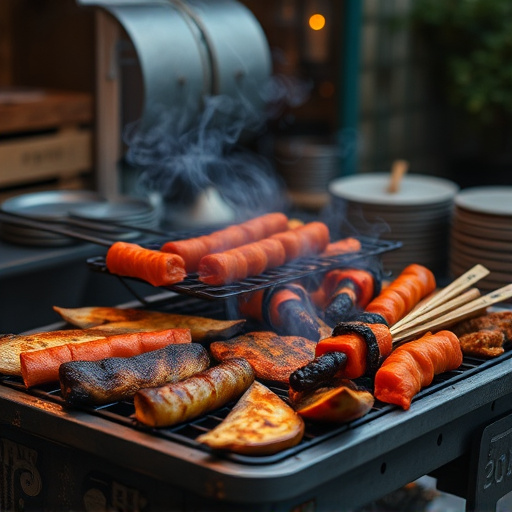
When it comes to slow smoking, choosing the right cut of beef is key to achieving a rich and bold taste in your beef BBQ recipe. Opt for a lean but flavorful cut like brisket or ribeye, as these will break down beautifully during the low-and-slow cooking process. Brisket is particularly prized among barbecue enthusiasts due to its substantial marbling and mouthwatering texture after slow smoking.
For an authentic beef BBQ experience, consider starting with a whole packer brisket or a bone-in ribeye roast. These cuts allow for maximum flavor development and are perfect for low-temperature smoking. Remember, the slower the better; this technique allows the natural juices to permeate every fiber of the meat, resulting in a tender, succulent end product that’s sure to impress your taste buds.
The Art of Dry Rubbing: Seasoning Your Beef
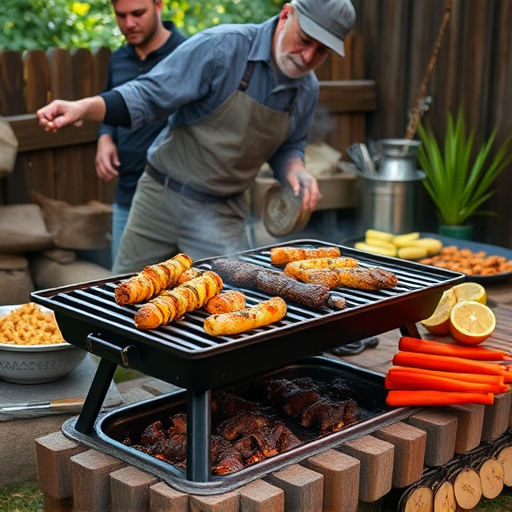
The art of dry rubbing is a crucial step in crafting a mouthwatering beef BBQ recipe. It’s more than just seasoning; it’s an intricate process that enhances the meat’s natural flavors and creates a rich, bold taste profile. By applying a generous coat of dry rub to your beef before slow-smoking, you introduce a complex blend of spices that penetrate the meat, transforming its overall character. This method allows for a deep, savory experience in every bite.
Each spice in the mix contributes uniquely, adding warmth, tanginess, or depth. Paprika, peppercorns, garlic, and onions are common ingredients known for their ability to intensify flavors. The rub’s texture—coarse or fine—also plays a role, creating a delightful contrast on the palate. It’s an art that allows BBQ enthusiasts to personalize their beef dishes, ensuring every smoke session results in a memorable culinary adventure.
Setting Up Your Smoker: Temperature Control is Key
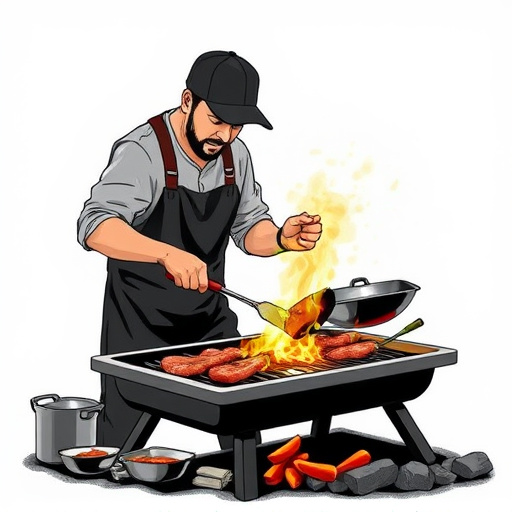
When it comes to crafting a mouthwatering slow-smoked beef BBQ recipe, setting up your smoker is the foundation for success. Temperature control is the key element that will determine the quality and taste of your final product. Aim for a consistent temperature range between 225°F to 250°F (approximately 107°C to 121°C). This slow, controlled cooking process allows the beef to break down, making it tender and flavorful.
Invest in a reliable smoker that offers precise temperature control and even heat distribution. Charcoal or wood-fired smokers are popular choices for achieving that authentic, rich flavor. Ensure your smoker is well-maintained, with clean racks and a stable fuel source. With the right setup and temperature regulation, you’re well on your way to creating an exceptional beef BBQ recipe that will tantalize taste buds.
Slow Smoking Techniques for Maximum Flavor

Slow smoking is an art that transforms ordinary beef into a mouthwatering BBQ masterpiece. This technique, often overlooked, is key to unlocking the rich and bold flavors that make slow-smoked beef so irresistible. It’s not just about time; it’s about temperature control and the delicate dance with smoke.
When preparing a beef BBQ recipe using this method, maintain a consistent low temperature, typically between 100°F to 225°F (38°C to 163°C). This slow cooking allows the natural juices to circulate, infusing every fiber of the meat with flavor. The smoke, gently wafting through the process, adds a subtle yet distinct taste that sets slow-smoked beef apart. Experimenting with different types of wood chips or chunks can also create unique profiles, from smoky and sweet to spicy and robust.
Adding Moisture: Brines and Marinades for Tender Beef
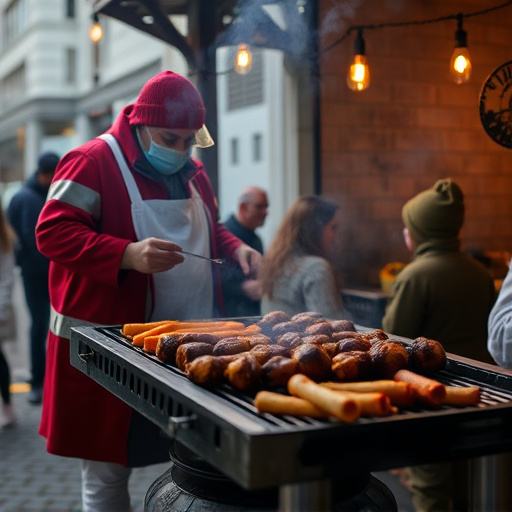
In the quest for a perfect slow-smoked beef BBQ recipe, one key aspect often overlooked is adding moisture to the meat. Brines and marinades play a crucial role in enhancing the taste and tenderness of the final product. A brine, essentially a salt solution, helps break down muscle fibers, making the beef incredibly tender. It also adds a subtle salty flavor that complements the rich, bold taste sought after in a slow-smoked beef dish.
Marinades, on the other hand, go beyond brining by infusing the meat with aromatic herbs, spices, and acids. These ingredients not only provide a burst of flavor but also act as natural tenderizers. Whether it’s a simple mixture of salt, sugar, and vinegar or a complex blend of spices, marinades can transform tough cuts of beef into succulent treats that are sure to impress in any BBQ setting.
Side Dishes to Complement Your Slow-Smoked Beef
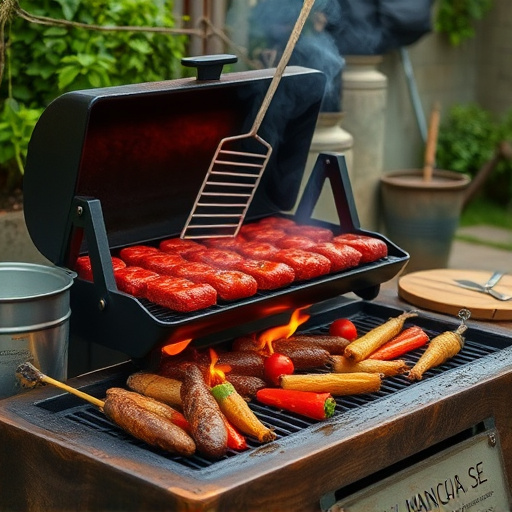
When it comes to enhancing the slow-smoked beef experience, the right side dishes can make all the difference. Pair your rich and bold beef BBQ recipe with classic sides that complement its robust flavors. Creamy mashed potatoes offer a comforting contrast to the smoky taste, while crispy coleslaw adds a refreshing crunch. For an extra layer of depth, consider adding barbecue sauce or a tangy pickle relish to cut through the richness.
Other popular choices include baked beans, which pair well with the savory smoke flavor, and corn on the cob, either grilled or boiled, for a simple yet satisfying side. These accompaniments not only complete your beef BBQ recipe but also ensure that each bite is a delightful balance of flavors, making every meal a memorable one.
Serving Suggestions: Plating and Pairings
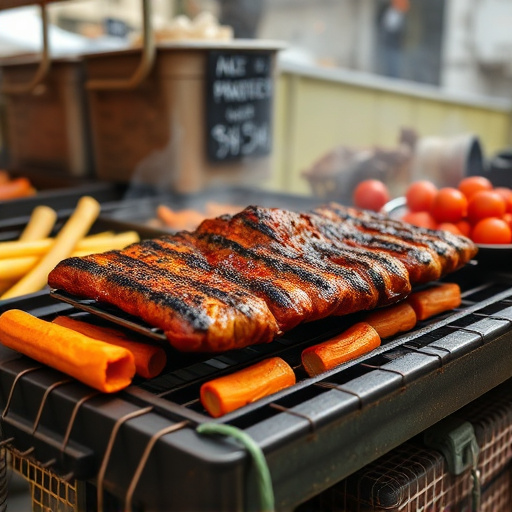
When serving slow-smoked beef, presentation matters. Plate your tender, rich beef with a side of creamy mashed potatoes or a hearty coleslaw for a classic combination that lets the robust flavors shine. Add a sprinkle of fresh herbs and a drizzle of barbecue sauce to elevate the dish visually and enhance the bold taste profile—a true delight for beef BBQ recipe enthusiasts.
For an even more satisfying meal, pair your slow-smoked beef with a rich, full-bodied red wine or a crisp craft beer. The deep flavors of the meat and accompanying sides create a harmonious balance, making it a perfect dinner party centerpiece or indulgent weeknight treat.
Tips for Perfecting Your Slow-Smoked Beef BBQ Recipe
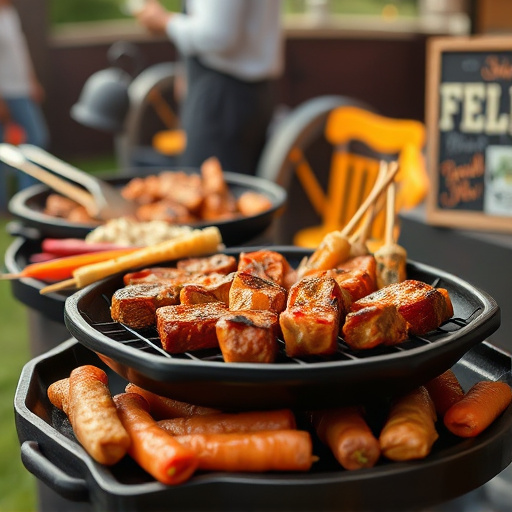
Mastering the art of slow-smoked beef requires a few key tips to achieve that perfect, rich, and bold taste. First, choose a high-quality cut of beef, such as a brisket or ribeye, ensuring it’s well-marbled for optimal flavor retention during the slow smoking process. The right wood selection is equally important; opt for flavors like oak, hickory, or mesquite to infuse your beef bbq recipe with depth and character.
Second, set your smoker to a consistent low temperature—ideally between 225-250°F (107-121°C)—to allow for slow, even cooking. This method ensures the meat remains moist and tender as it absorbs the smoky flavors from the wood chips or chunks. Patience is paramount; don’t rush the process. Regularly check and baste the beef with your favorite sauce to keep it moist and enhance the overall taste profile of your beef bbq recipe.
